-
Welcome to Talking Time's third iteration! If you would like to register for an account, or have already registered but have not yet been confirmed, please read the following:
- The CAPTCHA key's answer is "Percy"
- Once you've completed the registration process please email us from the email you used for registration at percyreghelper@gmail.com and include the username you used for registration
Once you have completed these steps, Moderation Staff will be able to get your account approved.
You are using an out of date browser. It may not display this or other websites correctly.
You should upgrade or use an alternative browser.
You should upgrade or use an alternative browser.
Lean, Green, and Making the Scene(ry) - TT's Top 50 Plants
- Thread starter Kirin
- Start date
-
- Tags
- obvious plant top 50
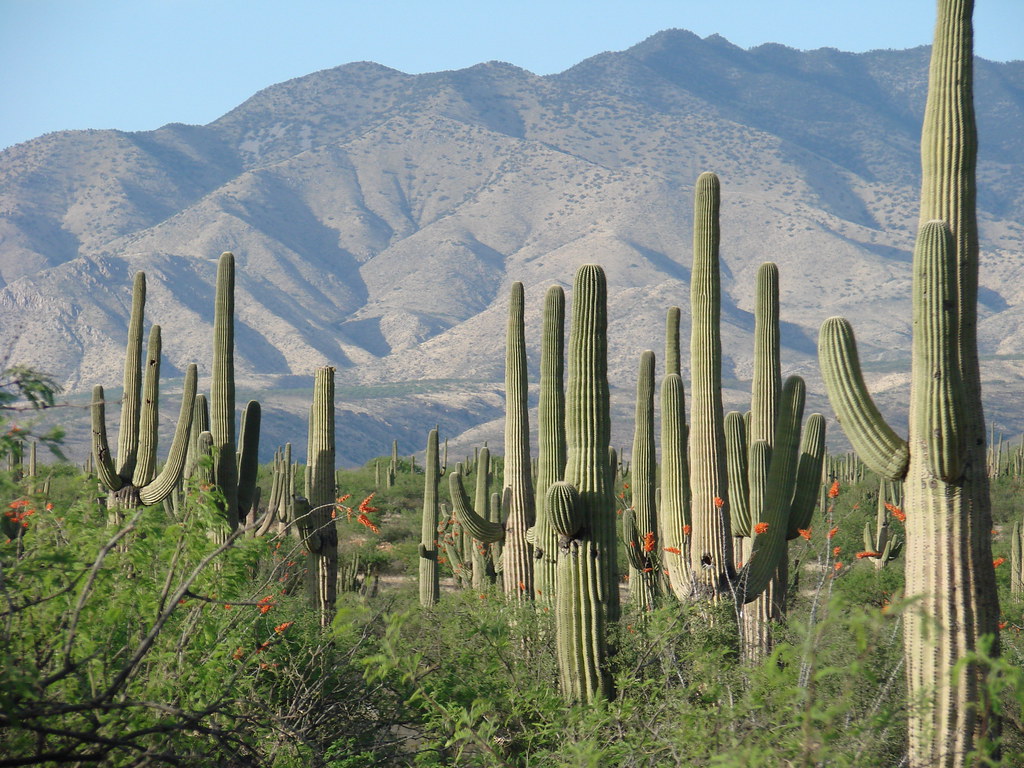
#38 (tie)
Saguaro
Species: Carnegiea gigantea
Habitat: the Sonoran Desert in Arizona and the state of Sonora in Mexico
Fun stat: an exceptional one grew to 78 feet before being toppled by a wind storm in 1986
Points: 52, Votes: 3, Highest: Johnny Unusual
When people voted cactus, they went for the big one - Saguaros often grow up to 40 feet tall, and are capable of storing large amounts of water within them such that a mature fully-hydrated individual can weigh up to two tons. The grow extremely slowly however, taking a decade to grow from a seed to just one foot high; the tall ones you see are often a century or more old. Their root networks may extend out a hundred feet to gather up water from infrequent desert rains. They're covered in extremely sharp spines that grow up to 3" long, and supported internally by woody "ribs". They have a highly variable number of arms, with some growing none at all and others having over 50. Flowers grow from each tip from April to June, though each individual flower lasts only one night. After flowering the grow sweet red fruits.
The saguaro is an important keystone species in its habitat, providing food and shelter for hundreds of desert creatures. The desert white-winged dove, for example, has a diet that consists of 60% saguaro nectar and fruit. Bees, bats, hummingbirds, and many other birds also feed on their nectar. Gila woodpeckers carve holes into the cacti for nests, which are later used by many other birds such as elf owls and purple martins.
Really though, these things are even bigger than you think, just look at this:
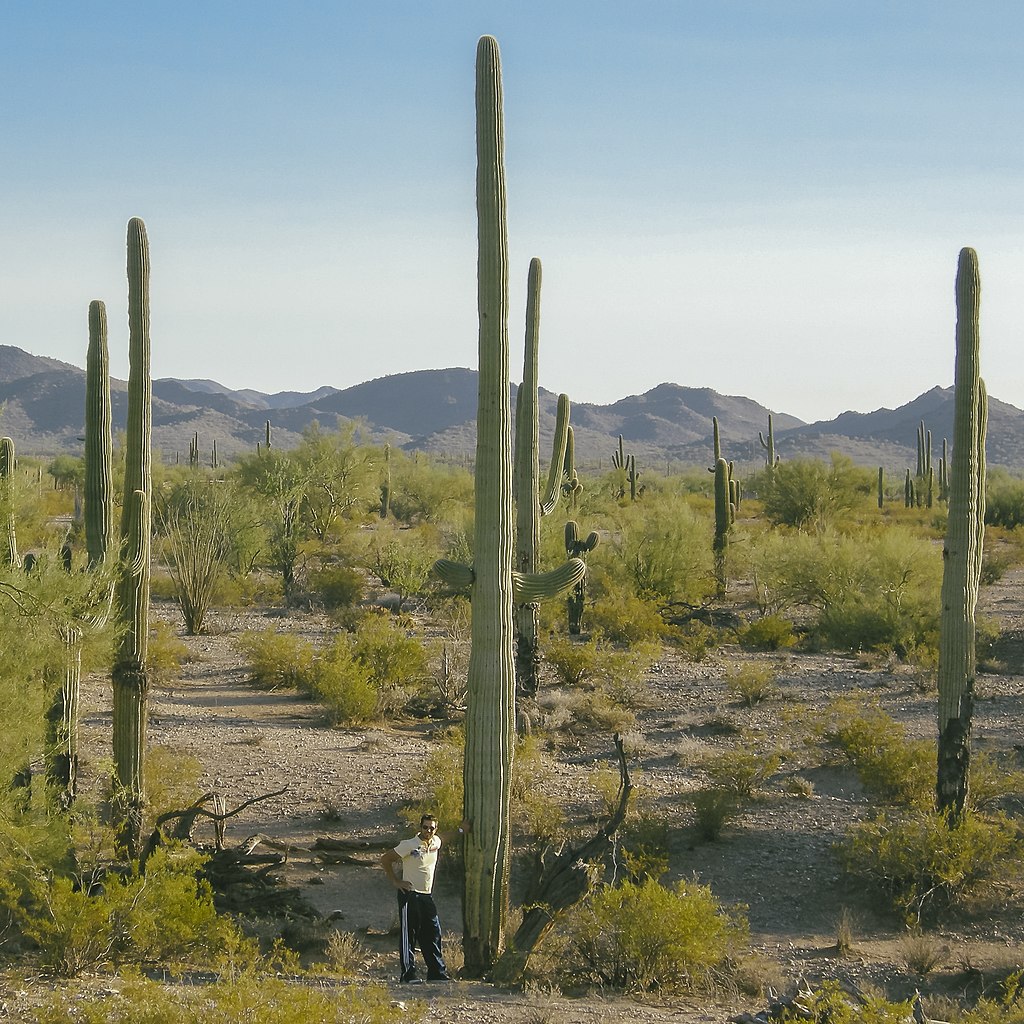
Violentvixen
(She/Her)
I didn't end up having any cacti on my list but they were definitely on the long version. Very fun and glad they made it.
Johnny Unusual
(He/Him)
They can also be shaped crazy.
Johnny Unusual
(He/Him)
Johnny Unusual
(He/Him)
Oh, we are having a Saguaroff!


#38 (tie)
Pikmin
Species: Ambuloradicis Pikminidae rubrus, auribus, caerula, yokozunum, venalbius, habisaxum, volarosa, habiglacius, supravelum
Habitat: Planet PNF-404 (likely post-apocalyptic Earth)
Fun fact: Pikmin are occasionally known to mimic songs they have heard
Points: 52, Votes: 2, Highest: Kirin
Pikmin are a genus of walking, semi-sentient plants native to the planet PNF-404. They come in several different species each with its own strengths and capabilities. They don't appear to have a fully-developed language and show fairly minimal hints of culture, but they are intelligent enough to follow orders and work together on simple tasks.
The creatures have a strange symbiotic life-cycle that relies on the local "Onion" species, which propagates Pikmin by sending out their seeds after it is fed with various sustenance, and also serves as a mobile nest for existing Pikmin that protects them from predators, going so far as to launch out of the atmosphere at night when predator numbers increase. The Onions are in the same family as Candypop Flowers, which can consume one species of Pikmin and generate a different species in its place. A curious life-cycle indeed.
Once planted, a Pikmin seed near-instantly matures into an adult Pikmin with a leaf. If left in the ground, the leaf will gradually develop into a bud and then a flower, but if plucked, the flower can also be grown if the Pikmin consumes nectar or spice. It's not clear whether the flowers actually play a role in the Pikmin life cycle, but they do increase their speed and strength. All Pikmin seem to possess a low level of bioluminescence, but this is far more pronounced in the recently-discovered Glow Pikmin adapted for venturing out at night.
Though individually weak, Pikmin that have banded together can form a formidable fighting force capable of handling much larger threats encountered within their ecosystem. Most Pikmin defend themselves by latching onto a predator and repeatedly smacking it with their stalks, though Rock Pikmin will just bodily hurl themselves at an enemy. White Pikmin possess an additional defense of being poisonous, and may sometimes sacrifice themselves to protect the group by sickening a predator when eaten.


#37
Common Bean
Species: Phaseolus vulgaris
Habitat: native to the Americas from Mexico to the Andes
AKA: Green Bean, Kidney Bean, Red Bean, Pinto Bean, White Bean, Navy Bean, String Bean, Snap Bean, Ayacotl, Búul, Purutu, Frijol
Fun fact: Fortune-telling using beans is called favomancy.
Points: 53, Votes: 2, Highest: Mogri
Beans, beans, the musical fruit! The more... ah, you know.
The common bean is a New World legume that was first domesticated by native central and south American peoples up to 8000 years ago. It's a key component of the Mesoamerican "Three Sisters" crop system, which features squash, maize, and beans in a symbiotic relationship. They came to Europe soon after contact was made and were widely adopted into local cuisines as well as soon spreading to the rest of the world. The species has been developed into many, many cultivars of which the ones noted in the AKA line above are just a sample.
Many varieties of dried beans, especially red kidney beans, contain a toxin which must be deactivated by cooking at boiling temperature for more than ten minutes before consuming - slow cookers often don't get hot enough, so don't cook raw beans in them! Properly cooked, beans are used in all manner of dishes, including chili, succotash, cassoulet, or alone as a side dish with rice or alongside meats. The famous "refried beans" of Mexican and Tex-Mex cuisine are a bit of a mis-translation, as they are not fried twice, but rather boiled, mashed, and then fried. Beans left in the whole pod, known as green beans, are often steamed, boiled, stir-fried, or baked in casseroles.
All wild varieties of the common bean grow as climbing vines, but many commercial cultivars have been bred to grow as bushes. Over 50 million tons of beans are grown every year, with China producing the largest amount.
Johnny Unusual
(He/Him)
Beans and rice are always a good dish, and I will often choose refried beans in my tacos/nachos/burritos over meat (whether that's healthier or not is irrelevant).
Green beans are delish, especially when sauteed with garlic and butter or roasted red peppers and balsamic vinegar.
Green beans are delish, especially when sauteed with garlic and butter or roasted red peppers and balsamic vinegar.
TBH I'm not really into beans either - I'm a weirdo who makes chili without beans *or* meat. (I use various meat-substitutes to be vegetarian-compatible... so actually I guess there's sometimes soybeans in there for the TVP.)
I was pretty surprised at how little votes and discussion we got for Pikmin - such cute li'l roots! I guess the Pikmin players didn't overlap with the contest voting set very much.
I was pretty surprised at how little votes and discussion we got for Pikmin - such cute li'l roots! I guess the Pikmin players didn't overlap with the contest voting set very much.
Meanwhile, time for another weekend "solo #1" honorable mention, this one from Patrick:

Illus credit: Nathan J Anderson
Avern, from the Book of the New Sun

Illus credit: Nathan J Anderson
Avern, from the Book of the New Sun
Patrick said:The Avern is a fictional plant from Gene Wolfe's The Shadow of the Torturer. Like many other animals and plants in the series, it is "not from Urth." They are several feet tall and covered in sharp, very poisonous leaves, and they are used in duels. A duelist holds the plant by the base in one hand, and then uses their other hand to carefully pluck off leaves and throw them at their opponent like knives. The leaves are described as sometimes colliding against each other in midair and then slashing and striking at each other. When the leaves find their target, they always kill.
The search for this plant makes up a pretty big part of the book, and the duel itself is very memorable. It's this alien thing that's used in such a surprising way. A+ plant, but please keep it away from me.
Last edited:
Violentvixen
(She/Her)
I intentionally left them off my list because I figured they'd get so many votes, oops.I was pretty surprised at how little votes and discussion we got for Pikmin - such cute li'l roots! I guess the Pikmin players didn't overlap with the contest voting set very much.

#36
Sunflower
Species: Helianthus annuus
Habitat: native to Western North America, growing in any fertile well-drained soil
Fun stat: the tallest one ever recorded grew to 30 feet
Points: 54, Votes: 2, Highest: ViolentVixen
The sunflower is a large annual flowering plant in the same family as asters and daisies. Known for its striking large flower heads (usually bright yellow, but shades ranging from deep red and orange to pale yellow), it also produces a large number of seeds rich in oil. The heads are actually a collection of hundreds of individual five-petaled flower florets in the center that turn to seeds, surrounded by sterile asymmetrical "ray flowers" around the outside forming what we see as the main petals.
Interestingly, the idea that sunflowers always face the sun (heliotropism) is not exactly true. Sunflower *buds* do track the sun during their growth phase, but then lock in and continuously face East once the flower heads begins blooming. This orientation allows rapid warming in the morning hours, which increases pollinator visits.
In a bit of a theme for this list, sunflowers were originally domesticated by Native Americans some 5000 years ago, probably in both the southeastern US and in Mexico. Due to the extremely useful oil produces in the seeds, they are now a crop grown worldwide, especially in Eastern Europe, with over half of total production now taking place in Russia and the Ukraine. The Russian Empire was actually the first to produce sunflower oil commercially in the 19th century, where it was widely used by the Orthodox church because animal-based fats could not be used during Lent. Sunflower seeds are eaten raw or roasted as a snack, and the oil is used in everything from cooking to margarine to biodiesel.
Sunflowers are also full of math. TBH I don't have time right now to break all this down so I'm just gonna quote straight from wikipedia:
Generally, each floret is oriented toward the next by approximately the golden angle, 137.5°, producing a pattern of interconnecting spirals, where the number of left spirals and the number of right spirals are successive Fibonacci numbers. Typically, there are 34 spirals in one direction and 55 in the other; however, in a very large sunflower head there could be 89 in one direction and 144 in the other.[11][12][13] This pattern produces the most efficient packing of seeds mathematically possible within the flower head.[14][15][16]
A model for the pattern of florets in the head of a sunflower was proposed by H. Vogel in 1979.[17] This is expressed in polar coordinates


where θ is the angle, r is the radius or distance from the center, and n is the index number of the floret and c is a constant scaling factor. It is a form of Fermat's spiral. The angle 137.5° is related to the golden ratio (55/144 of a circular angle, where 55 and 144 are Fibonacci numbers) and gives a close packing of florets. This model has been used to produce computer generated representations of sunflowers.
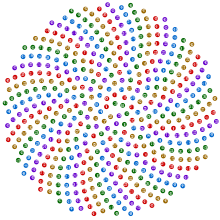
No worries!Whoops, sorry Patrick, not sure how I got Mogri's name on my notes there, fixing momentarily.
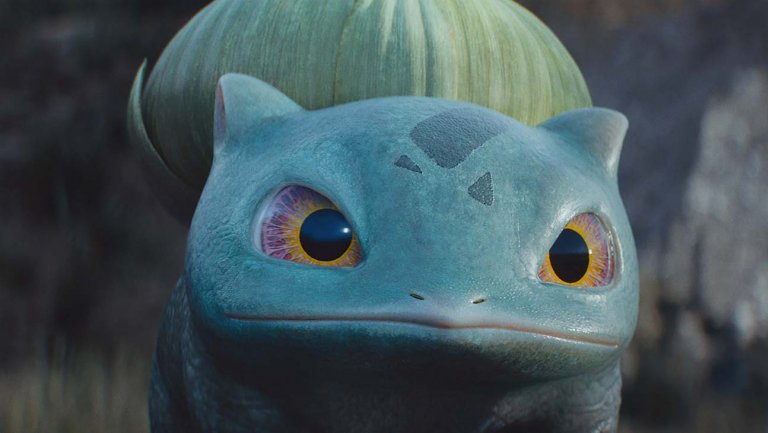
#35
Bulbasaur
Species: Bulbasaur
Habitat: native to the Kanto region, invasive everywhere else
AKA: Fushigidane, Bulbizarre, Bisasam,
Fun stat: National Pokedex #0001
Points: 55, Votes: 2, Highest: Mogri
Bulbasaur is a grass and poison type Pokemon known for being one of the original three starter Pokemon available in the Kanto region. The bulb on its back provides energy via photosynthesis, and conceals two prehensile vines that are used for self defense or attack and can also be used for climbing. It likes to nap in the sun. When they evolve, their bulbs bloom into large flowers.
Bulbasaur has multiple star turns in anime, where one is a featured companion of Ash for many years (and is voiced by legendary VA Megumi Hayashibara), and later another is trained by May. They also show up in several manga series and in the Detective Pikachu movie.
Bulbasaur was designed by Atsuko Nishida, an artist at Game Freak who worked on many of the cuter Pokemon including all of the gen one starters. It is reportedly series producer Junichi Masuda's favorite starter.
Bulbasaur has come a long way from its original pixel art:







Such a good 'lil bulb.
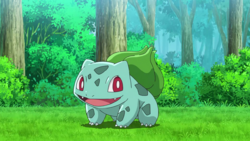
+4 252+ SpA Tera Grass Serperior Leaf Storm vs. 0 HP / 0 SpD Bulbasaur: 231-272 (100 - 117.7%) -- guaranteed OHKO
(Bulbasaur still deserves it, but I thought it would be funny to find a grass-type move that instakills Bulbasaur, who has a 4x resistance to grass)
(Bulbasaur still deserves it, but I thought it would be funny to find a grass-type move that instakills Bulbasaur, who has a 4x resistance to grass)
Violentvixen
(She/Her)
YeesssssSunflowers are also full of math.
Sure, if you boost to +4 first...+4 252+ SpA Tera Grass Serperior Leaf Storm vs. 0 HP / 0 SpD Bulbasaur: 231-272 (100 - 117.7%) -- guaranteed OHKO
(Bulbasaur still deserves it, but I thought it would be funny to find a grass-type move that instakills Bulbasaur, who has a 4x resistance to grass)

#34
Aloe Vera
Species: Aloe vera
Habitat: native to the Arabian Peninsula, now grows in semi-tropical and arid regions worldwide
Fun fact: the gel is useful but the leaf skin is toxic - do not eat
Points: 56, Votes: 2, Highest: Mogri
Aloe is a perennial flowering succulent that grows easily in most any well-drained soil. The fleshy leaves are lined with small barbs. In summer they may produce flowers on a spike that can grow up to three feet tall depending on the variety of Aloe, but typically they spread by "offsets" i.e. small clone plants growing from the base of the mother plant.
The species is widely grown as an ornamental plant and can thrive almost anywhere that's not too wet or too cold, also doing well indoors in pots. The gel inside the leaves is used commercially to make topical medications applied to burns, rashes, or dry skin - this use dates back several millennia and is documented in Greek codices. The latex from the plant contain the compound Aloin which used to be used in laxatives, but was banned by the FDA in 2002 due to insufficient safety data.
Johnny Unusual
(He/Him)
Ooo, that's a good choice.
I'd eat a bulbasaur.

